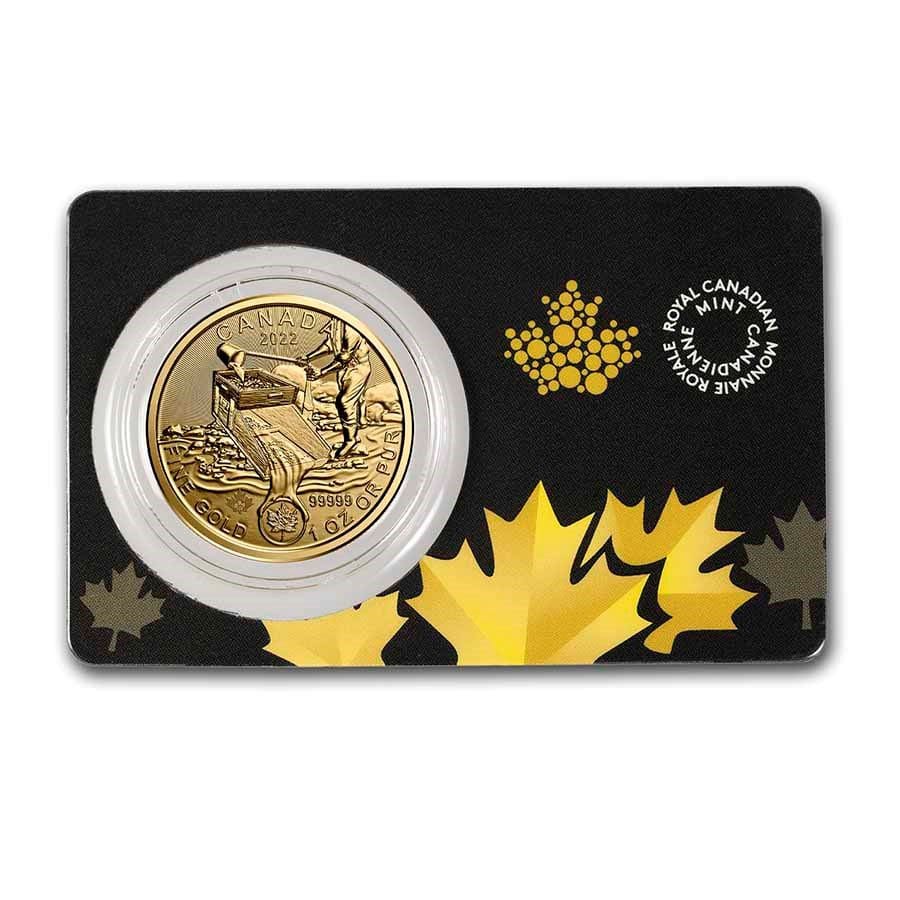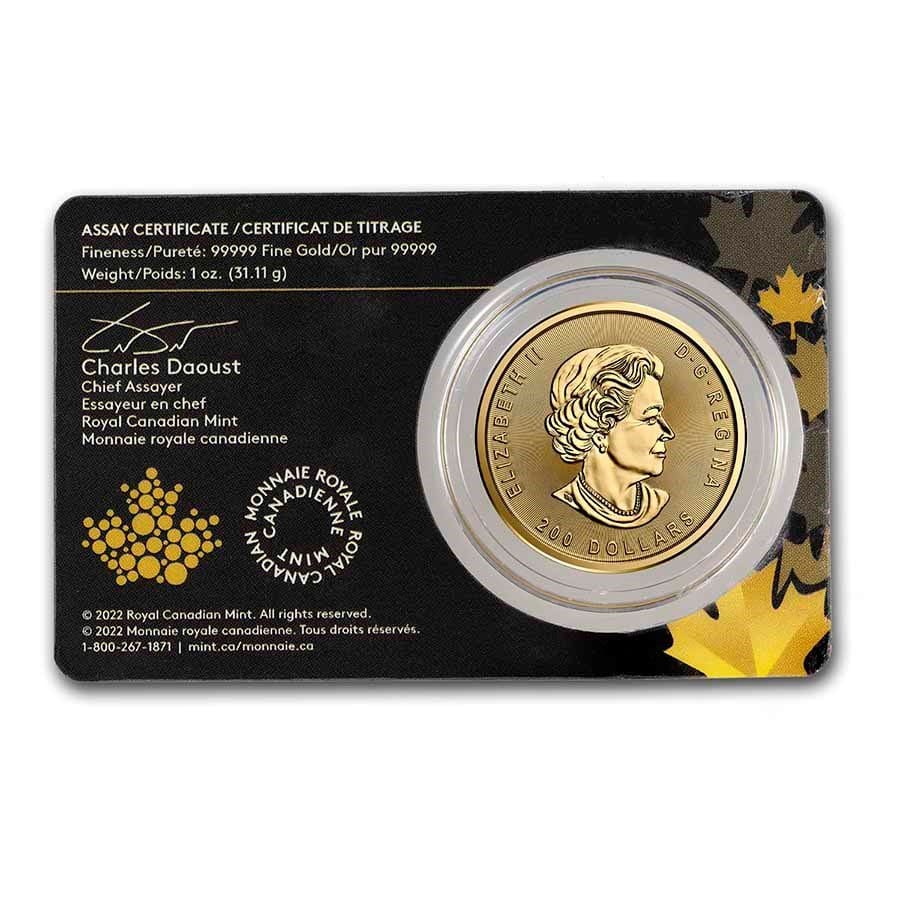Description
Royal Canadian Mint .99999 Fine Gold Bullion
While most Gold bullion coins are made of .9999 fine Gold, the Royal Canadian Mint has produced several commemorative coins of .99999 fine Gold. These are the purest Gold coins ever minted. Among these, you will find Gold Maple Leafs and Gold Call of the wild series and now the Klondike Gold Rush coin. The Royal Canadian Mint is known around the world for its beautiful designs and unique minting techniques. Their appeal grows even more with these very high purity Gold coins, adding yet another touch of elegance to the RCM name.Klondike Gold Rush
In the Klondike, the prospector’s pan was the simplest way of prospecting for gold, one pan at a time. Bonanza (formerly Rabbit) and Eldorado Creeks were the richest gold-bearing creeks, where most of the gold lay buried near the bedrock. To reach it, prospectors needed to dig a shaft through permanently frozen gravels (permafrost) down to bedrock, and then tunnel horizontally, a process known as drift mining. Miners used this method in the winter when the “paydirt” was hauled up to the surface and piled up until the spring. After the spring thaw, trough-like sluice boxes were filled with paydirt, where the muck and gravel were washed away. The much denser gold (gold is 19 times heavier than water) was captured in the riffles in the bottom of the sluice boxes. The rocker box was another popular choice for operations where water was not available in sufficient quantities, for example, on the bench claims on the hills overlooking Bonanza and Eldorado Creeks. Water was poured into the top, and a rocking movement helped separate the gravel from the gold, which was caught by riffles that lined the bottom of the box. The water was typically captured and recycled many times. These methods helped form the popular image of Yukon as a mining frontier during the Klondike Gold Rush and put Canada on the map as a leading gold producer. As a result of the gold rush, the Yukon joined Confederation in 1898. They also altered the landscape, and changed the environment. The influx of settlers had profound impacts on the Indigenous communities whose territories overlapped with what became the Yukon territory, irreversibly disrupting their traditional way of life. The effects of the gold rush, for better and for worse, are still felt in Canada today.
While most Gold bullion coins are made of .9999 fine Gold, the Royal Canadian Mint has produced several commemorative coins of .99999 fine Gold. These are the purest Gold coins ever minted. Among these, you will find Gold Maple Leafs and Gold Call of the wild series and now the Klondike Gold Rush coin. The Royal Canadian Mint is known around the world for its beautiful designs and unique minting techniques. Their appeal grows even more with these very high purity Gold coins, adding yet another touch of elegance to the RCM name.Klondike Gold Rush
In the Klondike, the prospector’s pan was the simplest way of prospecting for gold, one pan at a time. Bonanza (formerly Rabbit) and Eldorado Creeks were the richest gold-bearing creeks, where most of the gold lay buried near the bedrock. To reach it, prospectors needed to dig a shaft through permanently frozen gravels (permafrost) down to bedrock, and then tunnel horizontally, a process known as drift mining. Miners used this method in the winter when the “paydirt” was hauled up to the surface and piled up until the spring. After the spring thaw, trough-like sluice boxes were filled with paydirt, where the muck and gravel were washed away. The much denser gold (gold is 19 times heavier than water) was captured in the riffles in the bottom of the sluice boxes. The rocker box was another popular choice for operations where water was not available in sufficient quantities, for example, on the bench claims on the hills overlooking Bonanza and Eldorado Creeks. Water was poured into the top, and a rocking movement helped separate the gravel from the gold, which was caught by riffles that lined the bottom of the box. The water was typically captured and recycled many times. These methods helped form the popular image of Yukon as a mining frontier during the Klondike Gold Rush and put Canada on the map as a leading gold producer. As a result of the gold rush, the Yukon joined Confederation in 1898. They also altered the landscape, and changed the environment. The influx of settlers had profound impacts on the Indigenous communities whose territories overlapped with what became the Yukon territory, irreversibly disrupting their traditional way of life. The effects of the gold rush, for better and for worse, are still felt in Canada today.

